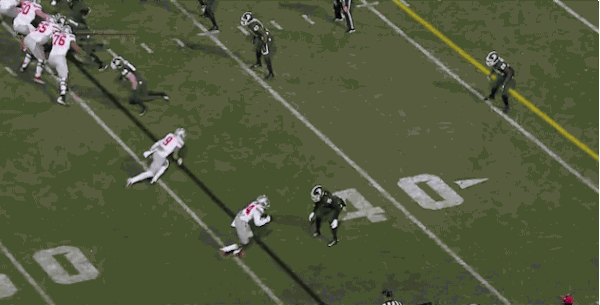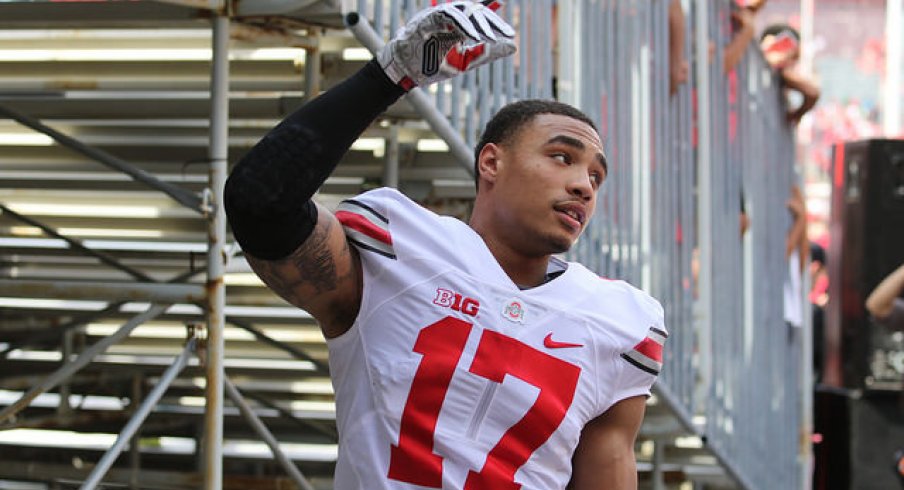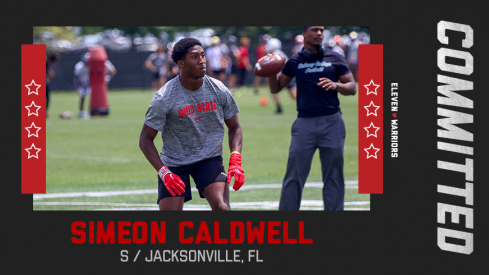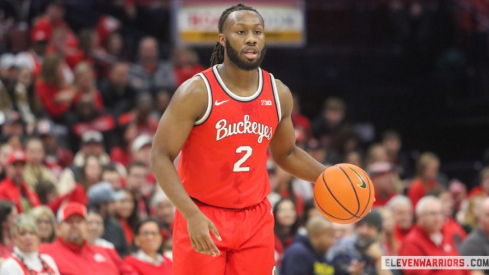Former Santa Clara standout Christoph Tilly, a top-10 center in the transfer portal, commits to Ohio State.
Although Urban Meyer's spring game may be little more than a glorified passing scrimmage, it nonetheless offers those outside the program the first glimpse of the Buckeye football team for the upcoming season.
And while numerous key contributors sat out Saturday's game, several takeaways could still be gleaned. None were more apparent than at the H slot receiver position, where the Ohio State coaching staff moved Jalin Marshall and Curtis Samuel to different positions -- with the goal of stretching the defense vertically from the slot.
The Marshall-Samuel Slot Experiment
With leading returning outside receiver Michael Thomas out this spring with injury, Meyer and his offensive coaching staff used the Buckeyes' 15 practices to move two skill players out -- specifically putting H Marshall as an outside receiver, and moving tailback Samuel to the slot. The Buckeye coaching staff's goal is simple -- get the best players on the field as much as possible.
Generally speaking, Ohio State runs two groups of wide receivers during games, with four outside wide receivers and two inside receivers. But the Buckeyes are currently strongest in the slot. Thomas and Corey Smith are the only returning contributors on the outside.
But Ohio State has Marshall, Dontre Wilson and Samuel at the H slot receiver position. So if Marshall can play outside and Samuel in the slot, that not only increases their versatility but provides the Buckeyes options to get their best players on the field.
Attacking the Seams Vertically
This is particularly important as the H's receiver's role expands in Meyer's spread offense. In earlier iterations of spread zone-read schemes, coaches put small, shifty players in the slot.
The slot player's role was to constrain the defense horizontally, whether it be in the pass game with bubble screens or the run game with jet sweeps. In so doing, the goal was to prevent underneath edge defenders from cheating against the run.
But in recent years defenses have increasingly used pattern-matching cover 4 against spread looks. Defensive coordinators like cover 4 against spread read offenses because of its versatility.
Broadly speaking in cover 4, the safeties read the number 2 (inside) receiver. If he releases vertically, the safety covers the inside receiver vertically. If the receiver releases inside or outside, the safety combo covers the receivers to that side of the field with the corner and outside linebacker. And if he blocks, the safety can come up to play the run, providing the defense 9 run defenders -- and regaining an arithmetic advantage.
The weakness of cover 4 is less schematic than personnel driven. By definition, safeties are not as good in coverage as corners. But, as discussed, cover 4 necessitates that those safeties play man coverage when the inside receiver releases downfield, creating a potential mismatch.

Enter the vertical slot threat. In today's Ohio State offense, the H receiver's role is not limited to jet sweeps and underneath routes. The Buckeye coaching staff again showed Saturday that they want to use slot receivers to attack the defense vertically -- either with seam or deep crossing routes.

A vertical slot threat is a critical counterbalance to Meyer's spread power run game -- as it freezes the safeties in both directions. If safeties are concerned about getting beat deep they will be less aggressive coming downhill against the run. And likewise -- by holding the safeties -- throws between the hash marks work well off play action.
Even More Versatility Required
But utilizing the slot receiver as a vertical threat self-evidently requires the H to be more well rounded than simply an edge runner. So the question is whether Samuel can function as a wide receiver.
On Saturday, Samuel demonstrated an ability to get open downfield -- along with his obvious talent running the football. He does not make a big target and must continue to work on catching, but he demonstrated he can play in the slot.
For his part, Marshall is a smooth route runner that is particularly adept at getting open in the middle of the field. He remains the Buckeyes' best deep-middle threat.
Come fall, expect Marshall to take reps at H and Samuel in the backfield. But Meyer has made clear he wants Samuel on the field.
So expect Marshall to also slide outside and Samuel into the slot. This allows the coaching staff to stick with its six receiver framework even though its top six receivers may include three outside receivers and three slot receivers -- instead of the usual four and two.
The Buckeyes can do so because of Marshall's versatility. It allows Ohio State to use three players in different situations at the H -- Marshall, Samuel, and Wilson. And then Ohio State can mix Marshall in outside along with Thomas, Smith, Noah Brown, and perhaps one more additional outside receiver. This not only threatens the defense vertically, but allows the Buckeyes to put Marshall, Samuel, and Ezekiel Elliott on the field at the same time.


